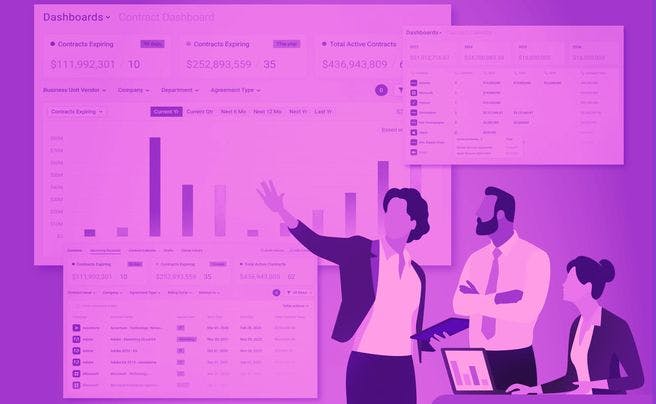Companies constantly grapple with the dual challenges of driving revenue growth while keeping costs in check. By harnessing cutting-edge technology and reevaluating current practices, you can uncover hidden revenue enhancement opportunities without driving costs too high.
Dive into the practical revenue strategies in this article to elevate your organization's financial health without sacrificing quality or productivity.
The Importance of Revenue Optimization
Revenue optimization is a strategic imperative that aligns with three core business objectives: growth, profitability, and long-term sustainability. Your organization can maximize revenue streams without increasing costs by looking thoroughly at its business processes and identifying opportunities for optimization. The aim is to capture value from each transaction rather than increase sales to achieve more revenue.
In practice, consider an airline company's dynamic pricing strategies. By analyzing historical data and other key metrics, the CFO can forecast demand for various routes and provide dynamic pricing and revenue management. Offering competitive prices improves margins and enhances customer satisfaction.
Revenue Optimization Strategies for CFOs

Effective pricing and revenue optimization strategies enable you to harness data and insights for smarter decision-making. Rather than expend resources testing and implementing various strategies, you can rely on proven methods that consistently deliver results.
Below are several reliable methods companies at the top of the Fortune 500 are using to optimize revenue.
Align Finance With Sales and Marketing for a Holistic Revenue View
Historically, finance teams have operated separately from other departments, such as sales and marketing. This traditional approach leads to missed opportunities for collaboration that drive revenue growth.
Your organization can understand its revenue streams and capitalize on team-driven insights by fostering collaboration between finance, marketing, and sales teams.
Here are several ways you can start aligning finance with sales and marketing:
Establish a new team with strategic members from all three departments
Start interdepartmental projects that require collaboration and oversight
Regularly schedule meetings to review and analyze data
Integrating finance strategies with those of marketing and sales creates a unified approach where each department understands how its activities contribute to revenue cycle optimization.
Foster Data Transparency To Inform Strategic Decision Making
Every member of your organization should have access to the same, up-to-date financial and operational data to streamline operations and facilitate informed decisions that drive growth.
The unified approach makes achieving business objectives easier, with fewer obstacles and bottlenecks slowing down the process. For CFOs, this means setting up systems for continuous data collection and analysis.
Integrating advanced data analytics platforms provides real-time insights accessible to stakeholders across the organization. To verify your centralized data repository remains relevant to all departments, assign a data steward who will oversee the quality and integrity of the data.
Leverage Data Analytics To Optimize Resource Allocation
Your data-driven insights pinpoint exactly where resources need to be spent to drive revenue growth. However, manually combing through complex datasets to extract actionable information is time-consuming.
You need sophisticated analytical tools and skilled professionals capable of interpreting complex data to turn it into a strategic advantage.
AI and other modern business tools will sift through thousands of real-time data points to uncover insights and provide recommendations. AI can revolutionize contract and document handling by extracting critical data from invoices to purchase orders (POs), identifying inefficiencies and uncovering hidden opportunities for revenue enhancement.
These technologies facilitate predictive analytics, providing foresight into market trends and customer preferences. They also enable you to make proactive decisions that align with your company's long-term objectives to produce a competitive edge in your industry.
Analyze Current Operations To Streamline Processes

No matter the size of an organization, inefficiencies always eat away at your budget and bottom line.
By analyzing every facet of your current operations in each department, you can identify activities that add value and eliminate those with minimal or negative impact.
For example, by streamlining procurement processes, you can save significant costs on supplies and materials. Additionally, eliminating redundant tasks and automating manual processes frees up resources to optimize the revenue cycle.
Here are a couple of ways you can streamline your current operations:
Automate repetitive and time-consuming tasks across various departments. This increases efficiency and allows your team to focus on strategic tasks that add greater value.
Identify and eliminate non-value-adding activities in your business processes. This approach focuses on maximizing product value while minimizing waste, leading to more streamlined operations.
Streamlining operations will focus stakeholders on value-generating activities that drive overall revenue pricing growth.
Invest in Technologies That Improve Sales & Marketing Efficiency

Today's technologies transform how sales and marketing departments operate. AI automates tasks that previously required hours of manual labor.
By investing in technologies that optimize sales and marketing tasks, you can significantly improve the efficiency of these departments, reducing operational costs while generating revenue. It's possible to improve customer acquisition costs by using tech that automatically creates customer segmentation of all your current customers.
Some examples of sales and marketing technologies include:
Utilize contract intelligence software to efficiently extract and analyze data from legal documents, contracts, and agreements. You'll get real-time insights into contract obligations and opportunities to help make better business decisions.
Marketing automation tools help automate repetitive marketing tasks like email campaigns and social media posts. This reduces manual labor while improving the accuracy of targeting and personalization.
Sales analytics platforms provide real-time insights into customer behavior, allowing for timely adjustments to strategies and resource allocation.
By investing in these technologies, your organization focuses on improving conversion rates and revenue potential.
How Terzo Can Help CFOs
Optimizing revenue is crucial for any organization's sustainable growth, and the strategies outlined in this article provide streamlined methods to achieve just that. We stand at the forefront of these advancements, offering a premier solution that empowers CFOs like you to optimize processes through advanced document techniques. Contact us today to unlock deeper insights, streamline operations, and achieve financial goals with unprecedented precision and efficiency.




